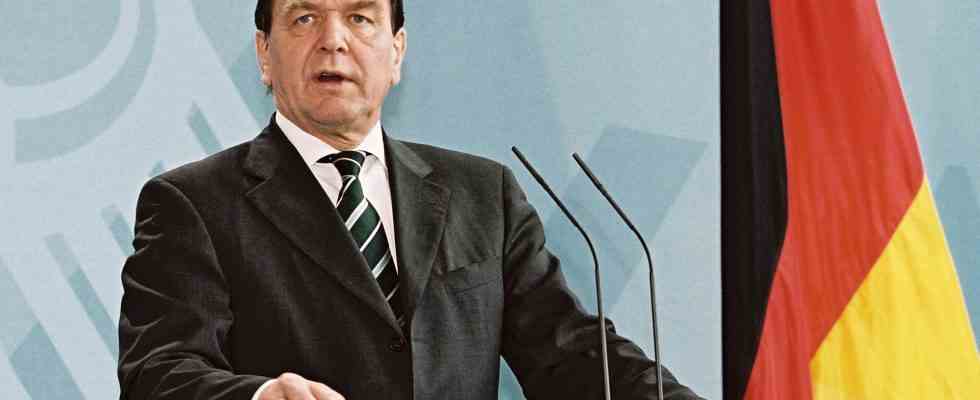Status: 03/14/2023 1:19 p.m
The “Agenda 2010” was a welfare state revolution – and a stress test for the SPD. 20 years ago, then Chancellor Schröder presented his plans.
There is no doubt that the then Chancellor Gerhard Schröder had only the very best of intentions when he took the lectern in the Bundestag in March 2003: “We will cut state services, demand individual responsibility and demand more personal contribution from each individual.” What Schröder called for in “Agenda 2010” was a welfare state revolution, which he considered essential. “It will inevitably be necessary to ax entitlements and benefits that are already an undue burden on younger people.”
The SPD shook to its foundations
Protection against dismissal was relaxed, a practice fee was introduced and, above all, unemployment and social assistance were combined. The agenda package shook the SPD to its very foundations and led to the most violent upheavals, including with the trade unions. “This is plain and simple social cuts,” said Michael Sommer, head of the DGB at the time. And the confidence of many employees in the SPD workers’ party was reduced – and with it their potential voters.
The PDS, on the other hand, was built up and could look forward to a boost. Angry comrades split from the SPD and founded a different kind of alternative for German voters: the “Wahlalternative Arbeit und Sozialsrecht” (WASG), which later merged with the PDS on the left. Your poster boy was the former SPD finance minister and Schröder intimate enemy Oscar Lafontaine. He demanded that Hartz IV had to go: “We have the wind of history in our sails.”
Gerhard Schröder’s government statement on “Agenda 2010”
Hans-Jürgen Kornder, ARD Berlin, daily news at 8:00 p.m., March 14, 2003
The dark hike of the SPD
Without Lafontaine and the many leftists who followed him, the SPD began its dark journey through the opposition and the grand coalition, with measly poll numbers, ever smaller, ever junior. Under a CDU chancellor who first reaped what Schröder had sown on the agenda and then, in 2017, mocked it: “The Social Democrats still don’t want to admit to this success story. One sometimes gets the impression that they are even ashamed for it. In any case, they deny it.”
Only when Andrea Nahles rolled up her sleeves and a new welfare state paper for the SPD was created in 2019, which included more funding and fewer demands as well as citizen benefits, did the wounds slowly begin to heal. “We’re leaving Hartz IV behind us,” said Nahles.
Was Agenda 2010 the beginning of the end?
Twenty years after Schröder, another social-democratic chancellor has shattered the SPD’s other certainties: Heavy weapons will be delivered to war zones, and the Bundeswehr will be upgraded at a cost of billions. Transformation. This is also affecting the SPD, even if it doesn’t shake them nearly as much as “Agenda 2010”. So was this agenda the beginning of the end of the SPD as it was known to date?
Marianne Schieder, who has been a member of the Bavarian Bundestag for many years, frowns: “Well, it was a very difficult test for the SPD. In retrospect, when you look at it in the light of day, Gerhard Schröder probably already recognized where changes had to be made. But he did Party not taken. And that’s bad.”
It would be a particularly delicate irony of history if Scholz’s idea of transformation ended up paying back into the account of a Union chancellor.
20 years of “Agenda 2010” – the beginning of the end of the SPD as we knew it
Barbara Kostolnik, ARD Berlin, March 14, 2023 1:08 p.m

